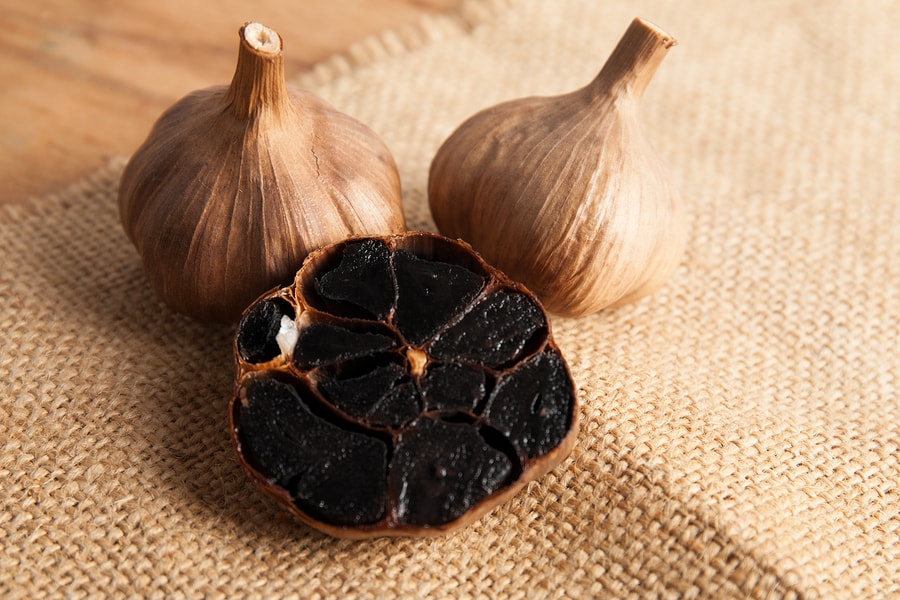Black garlic has recently captured the attention of home cooks, professional chefs, and adventurous foodies alike. This is not just hype—there’s a world of flavor hidden inside those seemingly humble, dark cloves. If you’ve never tried black garlic, you’re missing out on an entirely new taste experience. Below, we’ll explore how black garlic develops its signature flavor, why it pairs beautifully with both sweet and savory dishes, and how to highlight its sweet, savory, and umami notes in your cooking.
What Is Black Garlic, and How Is It Made?
Black garlic is simply regular garlic that has gone through a transformation called the Maillard reaction. Whole bulbs of garlic are aged under controlled conditions—low temperature and moderate humidity—for several weeks. During this “aging” or “fermentation” phase, the garlic cloves gradually turn dark and develop a soft, spreadable texture.
The Magic of the Maillard Reaction
The Maillard reaction—sometimes called the “browning reaction”—is key to black garlic’s deep flavor profile. While typically associated with golden-brown crusts on baked bread or grilled steaks, this reaction can also happen in less-intense heat over a longer period. In the case of black garlic, the reaction mellows out harsh garlic notes, transforming them into complex flavors reminiscent of molasses, balsamic vinegar, and slow-cooked caramel.
Exploring the Flavor: Sweet, Savory, and Umami
1. Subtle, Natural Sweetness
Contrary to the bite of raw garlic, black garlic offers a delicate sweetness. This gentle sweetness is almost reminiscent of dried fruit—think dates or figs—rather than ordinary sugar. When you first taste black garlic, you may notice:
-
Caramel or molasses undertones: a sweet smoothness that appears in the first moments of the bite.
-
Minimal acidity: though it may remind you of balsamic vinegar, it’s not overly tangy.
-
Mellow aroma: the sweet fragrance is there, but not overpowering—pleasantly subtle.
2. Complex Savory Undertones
As you continue to chew and let the flavors develop, you’ll discover layers of savory depth. Black garlic’s fermentation process can heighten its savoriness by:
-
Rounding out harsh edges: no raw sharpness remains—just a refined, layered taste.
-
Enhancing pleasant bitterness: slight bitter notes round out the sweetness, much like a piece of dark chocolate balances sweet and bitter.
-
Supporting other savory dishes: because the sweetness is natural and mild, black garlic integrates easily into meat and vegetable recipes without clashing.
3. Rich Umami Character
If there’s one word used most frequently to describe black garlic, it’s umami—that almost addictive, savory sensation often associated with mushrooms, soy sauce, aged cheeses, or slow-cooked meats. Black garlic brings that same deeply satisfying essence to countless dishes. You might pick up:
-
Earthy and meaty nuances: reminiscent of mushrooms or a well-aged, fermented sauce.
-
Lingering fullness on the palate: the aftertaste is round and comforting, prompting you to go in for another bite.
-
Balancing ability: the subtle sweetness and earthy backbone of black garlic can bind diverse flavors in a dish for a cohesive, full-bodied experience.
How to Highlight Black Garlic’s Flavor
-
Spread It on Toasts and Bread
One of the simplest ways to enjoy black garlic is to mash a few cloves into a smooth paste. Spread it on a warm slice of sourdough bread or a crisp cracker. The bread’s slight tanginess will enhance the sweetness of the garlic, while the toasted edges complement the savory umami notes. -
Blend It into Sauces and Marinades
Black garlic’s rich flavor translates beautifully into sauces. Combine a few cloves with olive oil, fresh herbs, and maybe a splash of lemon juice or soy sauce to create a dressing or marinade. The result is a balanced mixture of sweetness, savoriness, and tang—perfect for marinating meats or drizzling over roasted vegetables. -
Incorporate It into Soups and Stews
Adding chopped black garlic to slow-simmered soups and stews amplifies the comfort factor. It gently infuses the broth with sweet-savory notes that enrich the final dish without overpowering other ingredients. -
Pair with Rich Proteins
When layered with flavors of braised meats like beef, lamb, or pork, black garlic can turn an everyday roast or stew into something luxurious. Its subtle sweetness balances out any meaty heaviness, and the umami punch elevates the dish’s savory complexity. -
Try It with Sweets
Feeling adventurous? Dessert recipes using dark chocolate or caramel can benefit from a dash of black garlic. The common flavor threads—earthiness, subtle sweetness, and a hint of bitterness—work together to create a surprisingly harmonious dish.
A Sensory Experience Worth Savoring
When tasting black garlic for the first time, it’s best to do so thoughtfully. Notice how the flavors unfold in stages: first sweetness, then savory warmth, and finally the deep, lingering umami. This isn’t simply “fermented garlic”—it’s a journey of transformation that turns something strong and pungent into a sweet, complex, and uniquely delectable ingredient.
-
Key Takeaway: The magic of black garlic is in its ability to turn once-harsh flavors into a harmonious tapestry of sweet, savory, and umami notes—all contained within soft, darkened cloves.
Conclusion
Whether you’re new to black garlic or have been cooking with it for years, understanding its unique taste profile will help you make the most of this versatile ingredient. By teasing out its natural sweetness in a dessert, pairing its savoriness with roasted vegetables, or enhancing the umami in a stewed dish, black garlic can elevate your cooking to impressive new heights.
We invite you to experiment, taste, and discover the remarkable layers of flavor hidden in these velvety, midnight-hued cloves. You just might find that black garlic becomes your favorite “secret ingredient” for adding indulgent complexity to everyday meals.

Comments (0)
No comments yet. Be the first to comment!